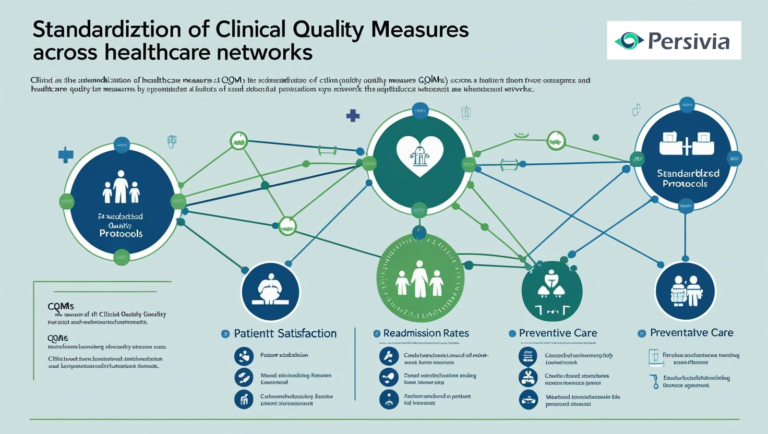Clinical Quality Measures Standardization Better patient outcomes, increased regulatory compliance, and unified care delivery are all facilitated by CQM across care networks. With the aid of eCQMS, programs such as MSSP, ACO, ACO Reach, and HEDIS, as well as a centralized Digital Health Platform, providers may reliably and consistently evaluate, manage, and optimize performance.
A key component of high-quality healthcare is consistency. However, because patients see multiple clinicians in different locations, standardizing care practices remains a big difficulty. Standardizing Clinical Quality Measures CQM is so essential. By serving as a compass, these measures guide healthcare organizations toward better clinical decisions and improved patient outcomes.
Care teams are guaranteed to use the same standards to evaluate performance when there is a uniform quality measurement system in place throughout large care networks. This standardization encourages adherence to national programs like MSSP, ACO Reach, and HEDIS, while also empowering care teams to enhance long-term patient engagement, boost MIPS scores, and close gaps in real-time.
Build the Foundation with Centralized Data
Organizations require reliable, consistent data before they can monitor or enhance quality. Data centralization and normalization are crucial first steps.
Capture and Normalize
To standardize measurements across providers:
- Collect information from a variety of sources, both organized and unorganized.
- Use natural language processing (NLP) to extract meaningful clinical phrases.
- Clean up and standardize the supplied data.
- Utilize the enterprise master patient index (eMPI) to match and combine patient records.
This preparation guarantees that metrics appropriately reflect performance across all sites and provide the groundwork for reliable quality estimates.
Apply Consistent Logic for All Measures
Every network must agree on how measures are defined and calculated. Without consistent logic, results will vary between locations, compromising the integrity of the program.
Adopt a Single Calculation Engine
A powerful calculation engine must:
- Support eCQMS for eligible hospitals and providers
- Include HEDIS, CMS, and payer-specific rules
- Enable chart-abstracted and custom quality measures
- Handle interoperability and Joint Commission metrics
This unified logic system guarantees that results are fair and comparable, no matter where the patient receives care.
Enable Real-Time Improvement
When data flows in and measures are calculated continuously, quality improvement becomes immediate and actionable.
Smart Automation with AI
Automated, AI-powered workflows help:
- Find and address care gaps as soon as possible.
- Give patients with high-risk conditions priority.
- Trigger tasks for follow-ups or screenings
- Provide ongoing provider feedback
Following that, care teams may act quickly and consistently, enhancing performance in crucial areas like treating chronic illnesses and conducting preventive screenings.
Streamline Reporting for All Stakeholders
With standardization, organizations no longer scramble to build custom reports for every requirement. Instead, data aligns automatically with reporting formats.
Simplified Submission Processes
A unified system can:
- Generate reports for MSSP ACO, ACO Reach, and eCQMS requirements
- Deliver HEDIS data to payers
- Submit Joint Commission and CMS reports with minimal manual entry
This improves reporting accuracy and timeliness while reducing administrative burden.
Improve Regulatory and Program Success
Participating in government quality programs demands both precision and agility. Standardized measures support this by aligning clinical efforts with policy goals.
Metrics That Matter
Examples of crucial metrics include:
- Blood pressure and diabetes control
- Preventive care adherence
- Screening rates for depression and cancer
- Social determinants of health tracking
These indicators tie directly into value-based reimbursement. A standardized approach supports faster audit preparation, higher star ratings, and more consistent reimbursement.
Leverage the Power of eCQMS
eCQMS provides real-time insight into clinical workflows. It tracks performance in the moment, not months later.
Benefits of eCQMS Integration
- Continuous quality monitoring
- Reduction in manual documentation
- Auto-generated audit trails
- Real-time performance alerts
With eCQMS, problems can be addressed during the reporting cycle, not after it ends.
Standardize HEDIS Across the Network
HEDIS metrics are a payer staple. Integrating them into clinical quality measurement ensures alignment between care delivery and financial goals.
Centralized HEDIS Management
- Track and trend HEDIS metrics alongside other quality measures
- Improve data sharing with payers
- Reduce duplicative reporting and manual uploads
This approach supports higher payer ratings and builds trust with value-based contracts.
Centralize All Activities in a Digital Health Platform
A robust Digital Health Platform enables organizations to manage every part of the quality journey:
- Pulls data from EHRs, labs, and external networks
- Consolidates and deduplicates patient records
- Automates measure calculations with validated logic
- Supports report modules, dashboards, and alerts.
This complete strategy promotes equity across the care network, enables faster decision-making, and increases openness.
Promote Patient Engagement Through Standardization
Standardized care shouldn’t stop at the clinic door. Quality programs now extend into the home via outreach, reminders, and virtual check-ins.
Reach Patients Where They Are
- Use SMS and email for appointment reminders
- Conduct virtual consultations for preventive services
- Use notifications for measurements that are out of range to remotely monitor chronic conditions.
These interactions are logged into quality systems and contribute directly to improved performance scores.
Takeaway
Healthcare networks can gain a competitive edge in delivering equitable, consistent treatment by implementing standardized Clinical Quality Measures (CQM). Benefits include improved MIPS scores and expedited audit processes in the clinical, administrative, and financial domains.
Many healthcare companies opt for Persivia’s platforms that manage all facets of quality, from real-time care improvement and regulatory reporting to data collection and measure calculation, to facilitate this transition. These platforms provide a single, AI-powered environment that easily satisfies eCQMS, HEDIS, MSSP ACO, and ACO Reach standards. Get in touch today to learn more!


